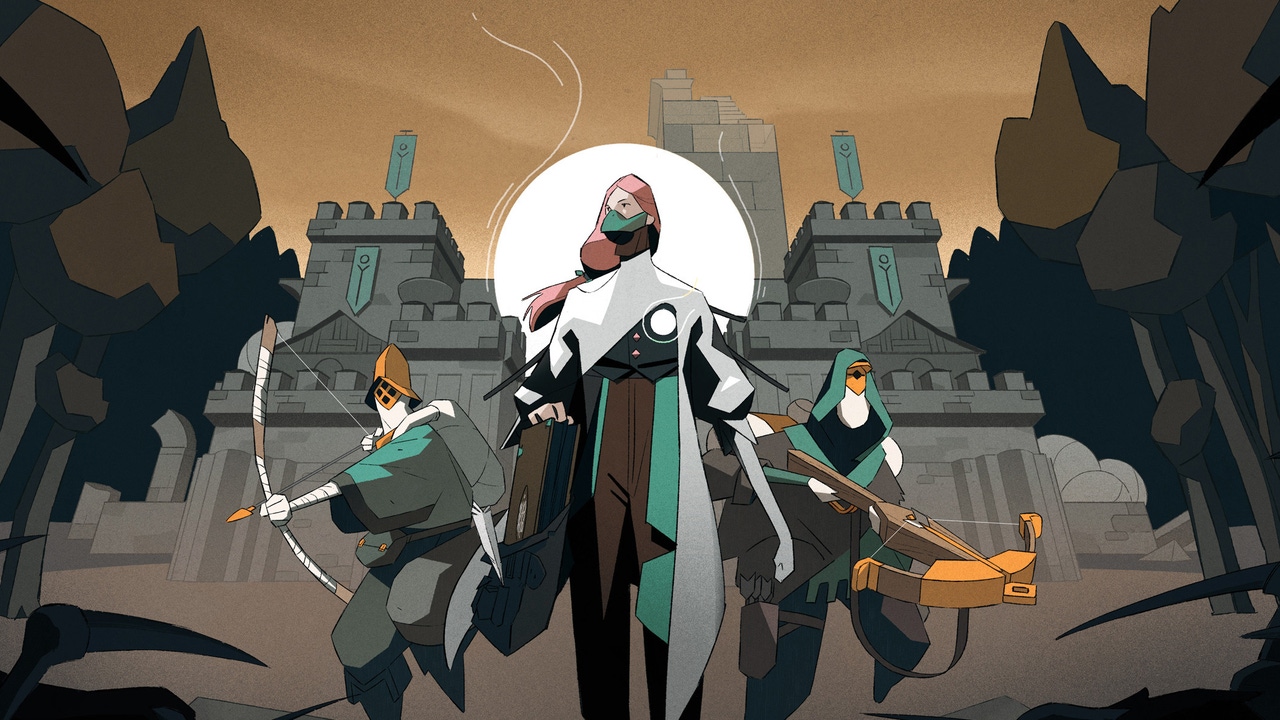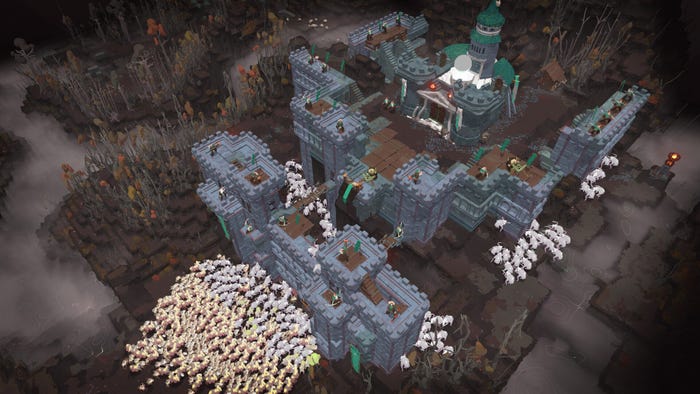Trending
Opinion: How will Project 2025 impact game developers?
The Heritage Foundation's manifesto for the possible next administration could do great harm to many, including large portions of the game development community.

Digital Sun Games' Cataclismo is looking like it will be a gorgeous game. It's a hybrid city-builder/real-time strategy title that takes gameplay inspirations from Lego bricks, Warcraft III, and Age of Empires II. In the game, players are tasked with fending off hordes of monsters in a fantasy world by building multilayered castles manned by soldiers wielding an array of otherworldly weapons.
It's a notable genre shift for the studio which broke big in 2018 with Moonlighter, a shopkeeping-themed action role-playing game. According to creative director Vicent Ramirez and CEO Javi Giménez, the genre-and-gameplay switch came from developers on the team, who wanted to stretch beyond the top-down RPG format.
But peer closer, and you might see another subtle influence on Cataclismo. Digital Sun is based in Valencia, a city in Spain's Castile region, whose name literally means "land of castles." Ramirez and Giménez were game to discuss how the architecture of their immediate surroundings influenced them, and what being cognizant of that connection can mean for creativity in game development.
Plenty of tower defense-adjacent games like Cataclismo will lean on the aesthetic of medieval fortifications to fuel their design, but the Digital Sun team's fascination with the classic fortress structure drips all the way down into the game design. Giménez said that the goal is for players to naturally build "beautiful" castles that don't have to trade off functionality for form when enemies storm the gates.
That's a harder needle to thread when castle construction gets as modular as it does here. Ramirez said the building system is inspired by the act of snapping Lego bricks together, and players are given the chance to fine-tune the shape of their buildings. The feature will be deep enough to support a monster-free "creative" mode.

Image via Digital Sun.
Early versions of the system possessed a problem many designers can relate to. Players would drift into one of two groups: those who enjoyed building beautiful castles, and those who ignored the aesthetics of their base to build the most efficient monster-killing operations.
In other games that's a feature, not a bug. There's a valid fantasy in rewarding players who make specific tradeoffs to access power. But that wasn't what Digital Sun wanted. The next step in designing the castle-building gameplay was to merge those two playstyles, so players focusing on either aspect of basebuilding would make something useful in gameplay.
Letting the two player goals sit so far apart also conflicted with the very idea of why castles are so appealing. "Real castles look good because they are also useful in battle," Giménez deadpanned.
As he said—turrets, arrow slits, moats, gates, concentric baileys, layered courtyards, and other practical features of real-world castles are what draws the human eye to them.
But castles don't look the same from country to country—and it's here that the castles of Castile creep into the visual style of Cataclismo.
Ramirez explained that as Digital Sun developed the visual style of Cataclismo, there wasn't a goal to recreate Spanish medieval architecture. It's a fantasy game in a fantasy world, so that opened more doors for how art and gameplay could work hand-in-hand.
But then one of the game's artists—who originally hails from Russia—walked into the studio one day and exclaimed "all the architecture in Cataclismo is the architecture in Valencia."
"It's quite unconscious for us," Ramirez said. He and Giménez agreed that the similarities just had to do with the fact that when you're making a castle making game in a region filled with castles, they're going to worm their way inside your minds.
There're lessons to draw from that—the first and obvious one being that because Cataclismo has such a unique set of inspirations, it has a more eye-catching look. But the second is that our surroundings in game development have an unconscious influence on us, and can shape decisions in our games.
Becoming conscious of those influences can be an opportunity to either lean into what makes our surrounding environments unique, or reveal what needs to change about a game. We've heard developers speak on this topic a few times, one notable example being Insomniac Games' reworking of the Sunset Overdrive city to look less like Burbank, California and more like a fictional "San FranTokyo"
So if you're reading this—pop outside and look at the world around you. Does your game look like that world? Does it need to look more like it? Or less?
That's your call. But as Cataclismo shows, there's plenty to learn once you make that analysis for yourself.
You May Also Like